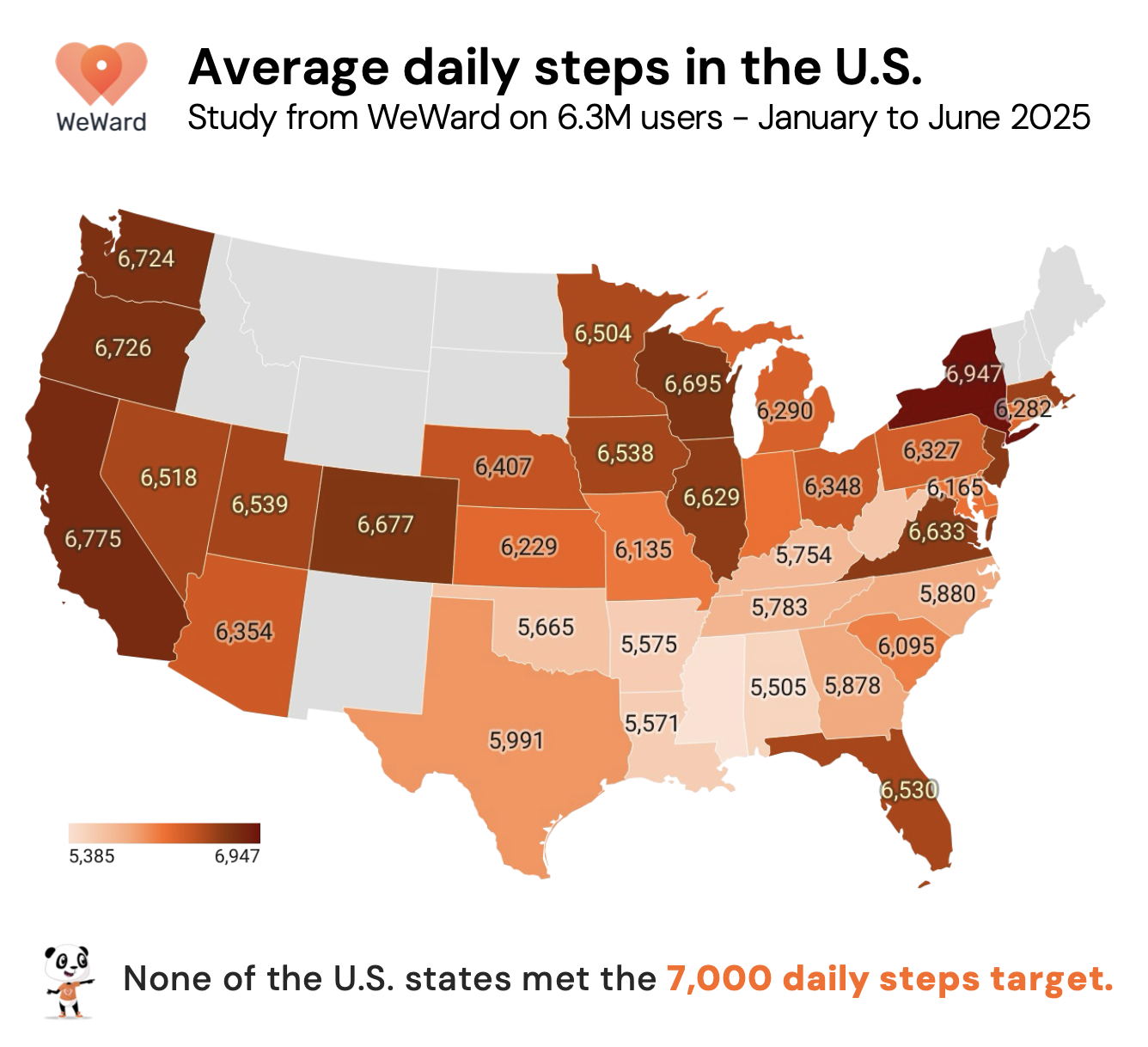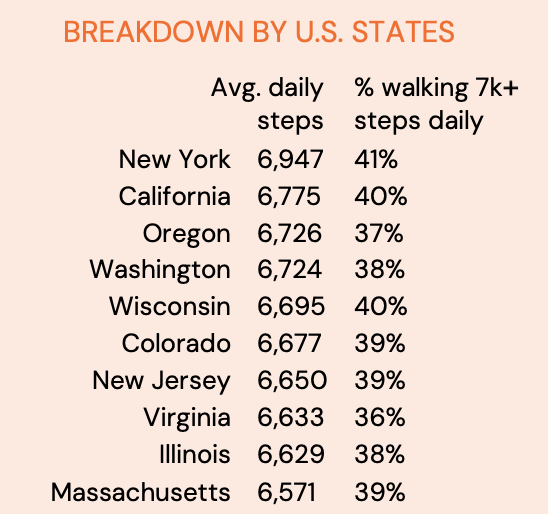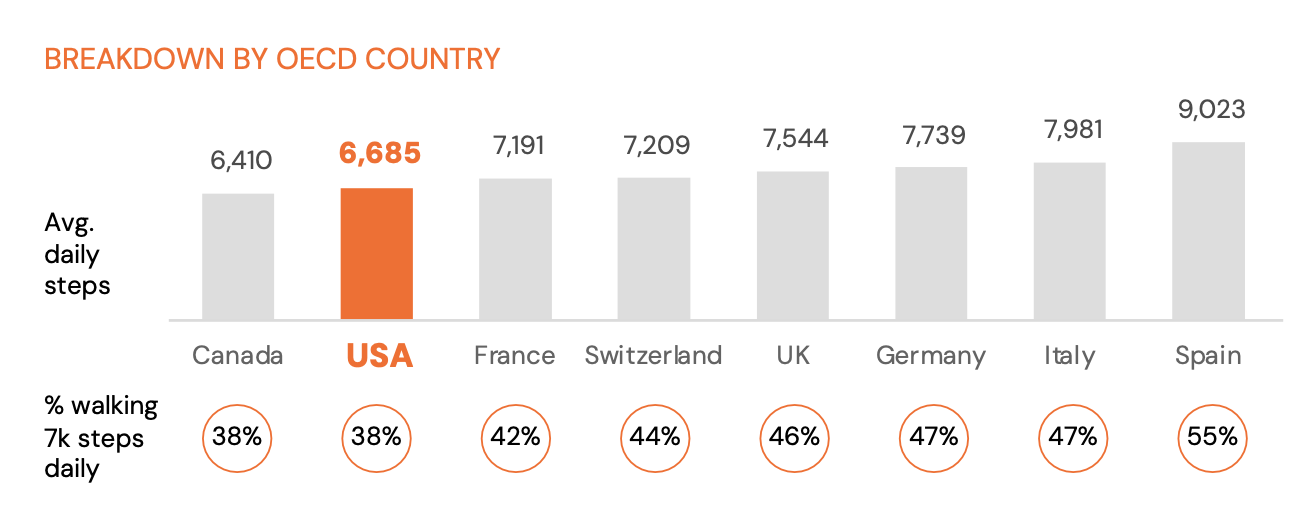A new study suggests that 7,000 steps a day is sufficient for strong health benefits. WeWard looked into how Americans fare against this new standard, analyzing walking patterns on a city, state, and global level.
A recent study led by The University of Sydney is challenging the long-held “10,000 steps a day” rule, revealing that around 7,000 steps is actually enough to deliver significant health benefits. To see how Americans measured up to this new target, WeWard looked into the habits of 6.3 million U.S. users between January and June 2025.
Here were the key findings:
All states missed the mark
None of the U.S. states met the 7,000 average daily steps target, though a few came close with the most active state just 50 steps short.
“We think bridging this gap is entirely feasible,” says WeWard CEO Yves Benchimol, “as we’ve seen firsthand how digital tools can make a real difference in long-term behavior change and daily motivation.”

WeWard also looked into the proportion of each state that met this walking goal, and found that less than half of residents in each logged 7,000 steps per day or more. In the most active states, that proportion hovered around 40%; in the least active, it dipped below 30%.
New York leads, West Coast follows
Of all the states, New York topped the list at 6,947 daily average steps, followed by California, Oregon, Washington, and Wisconsin.
The variation between states can be attributed to a variety of factors, including urban planning and transportation. In many U.S. cities, car-centric designs mean people often rely on driving for even short trips, while public transportation is more common in higher-ranking states like New York and California. Climate and lifestyle patterns may also play a role, with outdoor walking habits varying between regions that experience long winters versus those with milder year-round weather. These factors help explain why some states are closer to the benchmark than others, even if none have surpassed it yet.

U.S. lags behind its global peers
When compared to other OECD nations, the U.S. ranked second to last in daily step count, ahead of only Canada. Countries like Japan, Spain, and Italy saw higher averages, with Japan topping the chart at over 9,000 steps a day.

The Takeaway
Overall, the U.S. has some catching up to do on a state-by-state and global level, but it’s not too far off. With tools like WeWard and a more attainable 7,000 steps a day target, which is 30% lower than the 10,000-steps benchmark, there’s significant potential to shift the public’s perception of what an achievable daily activity goal is. This shift would not only lead to a healthier population, but a significant reduction in healthcare costs and the burden placed on the U.S. healthcare system.
“Overall, these findings reinforce something that we’ve long believed, which is that walking is one of the most powerful but still underutilized forms of medicine,” says Benchimol.
.svg)
.svg)
.svg)






.png)


